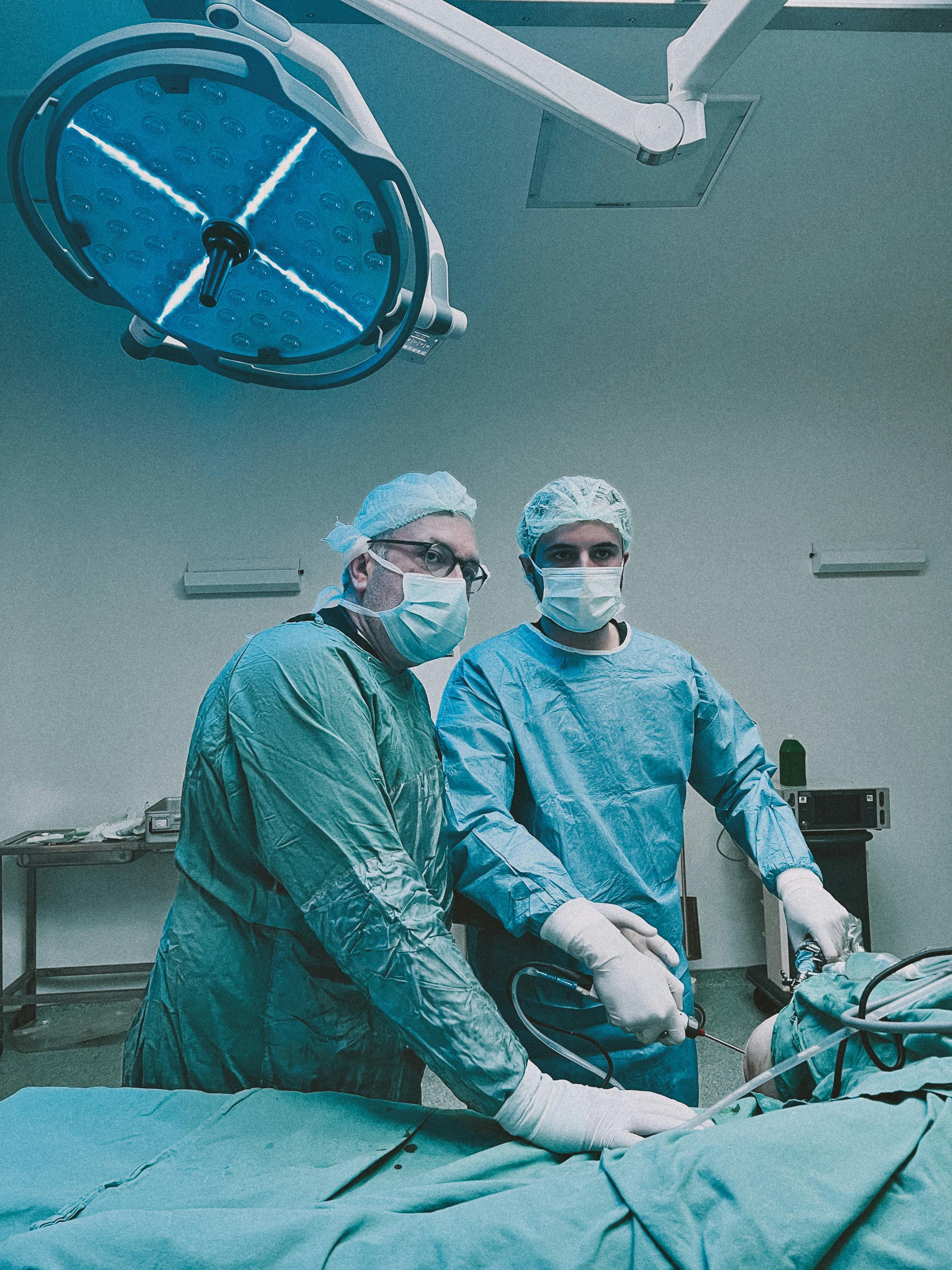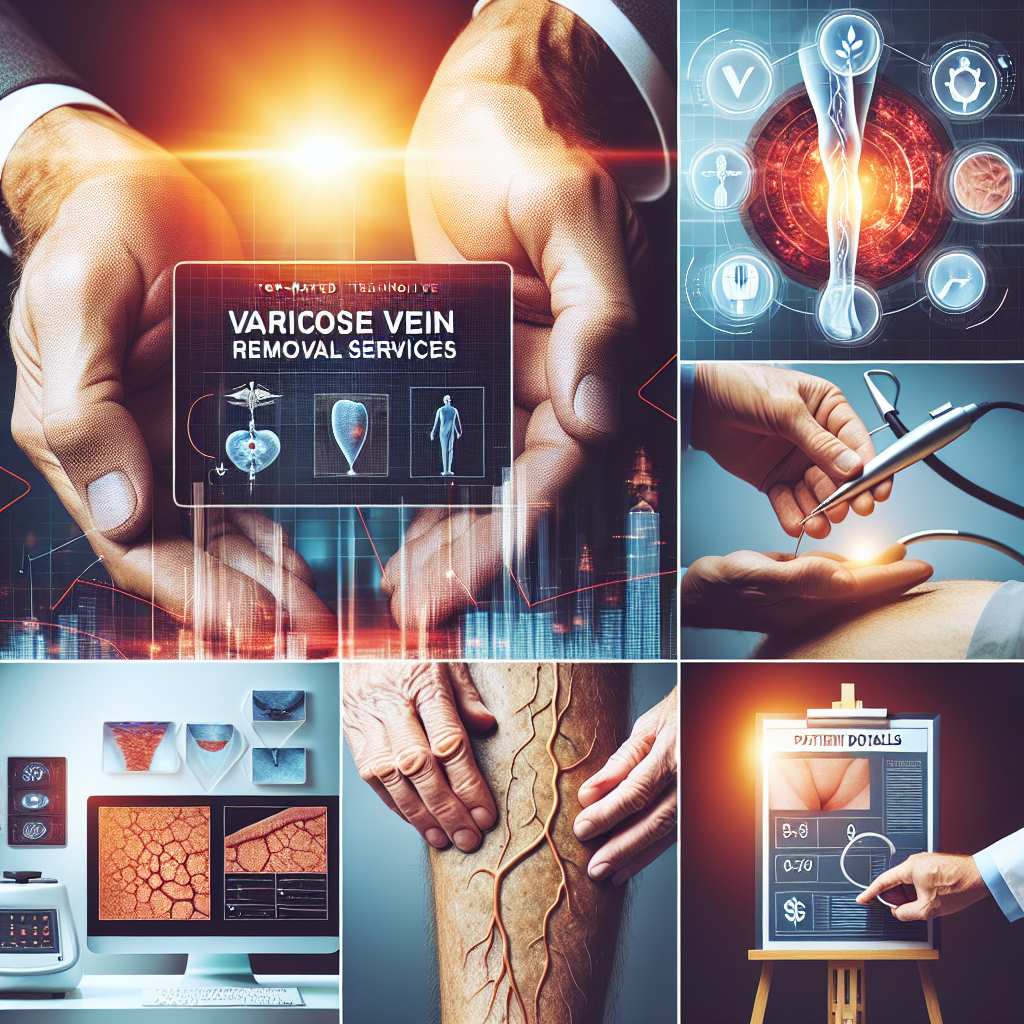
If you’re searching for the top-rated varicose vein removal services, look no further. This article aims to provide answers to the questions most commonly asked by individuals who are ready to buy a product or solution to combat varicose veins. Understanding the concerns and needs of those seeking treatment for this condition is crucial, especially when it comes to transactional questions, such as finding the best services available. So, without further ado, let’s delve into the world of varicose vein removal and discover the top-rated options out there.

join our newsletter to get alerts
1. Traditional Surgical Methods
When it comes to varicose vein removal, there are several traditional surgical methods that have been used for years. These methods involve physically removing or closing off the veins to treat the condition.
1.1. Endovenous laser treatment (EVLT)
Endovenous laser treatment, or EVLT, is a minimally invasive procedure that uses laser energy to treat varicose veins. During the procedure, a small laser fiber is inserted into the affected vein, which emits laser energy to heat and seal the vein. This causes the vein to collapse and eventually be absorbed by the body. EVLT is known for its effectiveness and quick recovery time.
1.2. Radiofrequency ablation (RFA)
Radiofrequency ablation is another minimally invasive procedure used to treat varicose veins. Similar to EVLT, RFA involves inserting a catheter into the affected vein. The catheter delivers radiofrequency energy, which heats the vein wall and causes it to collapse. This seals off the vein and redirects blood flow to healthier veins. RFA is often preferred for larger varicose veins.
1.3. Ambulatory phlebectomy
Ambulatory phlebectomy is a surgical procedure that involves physically removing varicose veins through small incisions in the skin. This procedure is typically performed under local anesthesia and is suitable for removing large veins close to the surface of the skin. Ambulatory phlebectomy is generally reserved for cases where other minimally invasive treatments may not be suitable.
2. Minimally Invasive Procedures
In recent years, there has been a shift towards minimally invasive procedures for varicose vein removal. These procedures offer less downtime and are generally less invasive compared to traditional surgical methods.
2.1. Sclerotherapy
Sclerotherapy is a popular minimally invasive procedure used to treat spider veins and small varicose veins. During the procedure, a solution is injected into the affected veins, causing them to collapse and eventually fade away. Sclerotherapy is typically performed in multiple sessions and does not require any incisions or anesthesia. It is considered safe and effective for cosmetic improvement.
2.2. Endovenous chemical ablation (MOCA)
Endovenous chemical ablation, also known as MOCA (Mechanochemical Ablation), is a newer minimally invasive procedure that combines mechanical and chemical methods to treat varicose veins. This procedure involves inserting a catheter into the affected vein, which delivers a chemical solution and mechanically disrupts the vein lining. This dual-action approach helps to occlude and collapse the vein, redirecting blood flow to healthier vessels.
2.3. Cyanoacrylate closure
Cyanoacrylate closure, also referred to as vein glue, is a minimally invasive procedure that involves sealing off varicose veins using a medical adhesive. This procedure is performed by inserting a catheter into the affected vein and delivering the adhesive directly into the vein. Once the adhesive is applied, the vein is sealed shut, and blood flow is rerouted to healthier veins. Cyanoacrylate closure has gained popularity for its effectiveness and minimal discomfort during the procedure.
3. Non-surgical/Vein Sealing Treatments
For individuals seeking non-surgical options for varicose vein removal, there are vein sealing treatments available that do not involve physical removal or closure of the veins.
3.1. VenaSeal
VenaSeal is a non-surgical treatment option for varicose veins that uses a medical adhesive to seal off the affected veins. Similar to cyanoacrylate closure, this procedure involves inserting a catheter into the vein and delivering the adhesive. The adhesive causes the vein to seal shut, eliminating the underlying cause of varicose veins. VenaSeal is well-tolerated by patients and has shown promising results in clinical studies.
3.2. Varithena
Varithena is a foam sclerosant that is injected into varicose veins to seal them off. The foam fills the vein, effectively closing and shrinking it. This procedure is typically performed under ultrasound guidance to ensure accurate placement of the foam. Varithena has been proven safe and effective in clinical studies and offers a non-surgical option for individuals with varicose veins.
4. Combination Treatments
In some cases, combination treatments may be recommended to achieve the best results for varicose vein removal. These treatments involve a combination of surgical and non-surgical techniques.
4.1. Phlebectomy with EVLT/RFA/MOCA
Phlebectomy, which involves physically removing varicose veins, can be combined with other minimally invasive procedures such as EVLT, RFA, or MOCA. This combination approach allows for the removal of larger veins while also addressing the underlying cause of varicose veins.
4.2. Microphlebectomy with Sclerotherapy
Microphlebectomy is a minimally invasive surgical procedure that involves removing varicose veins through tiny incisions. This procedure can be combined with sclerotherapy to target both larger and smaller veins. Microphlebectomy removes the larger veins, while sclerotherapy is used to treat smaller veins and provide overall improvement.
4.3. Radiofrequency ablation with cyanoacrylate closure
Radiofrequency ablation (RFA) and cyanoacrylate closure can be used together to maximize the effectiveness of the treatment. RFA helps in closing off the varicose veins, while cyanoacrylate closure provides additional sealing and occlusion. This combination treatment offers a comprehensive approach to varicose vein removal.

5. Clinic/Doctor Recommendations
Choosing the right clinic and doctor for varicose vein removal is crucial for a successful treatment outcome. It is important to research and find reputable clinics and experienced doctors who specialize in vein treatments. Look for clinics that have positive patient reviews and high ratings in varicose vein removal services. Consultation appointments can also give you the opportunity to ask questions and assess the expertise and approach of the doctor.
6. Patient Reviews and Ratings
To gain insights into the quality and effectiveness of varicose vein removal services, reading patient reviews and ratings can be helpful. Patient reviews often provide firsthand accounts of the patient’s experience with the clinic, doctor, and the specific treatment received. Look for reviews that discuss the results, recovery process, and overall satisfaction of the patients. Online platforms, forums, and social media groups dedicated to healthcare discussions can be valuable sources of patient reviews and ratings.

7. Cost and Insurance Coverage
The cost of varicose vein removal services can vary depending on factors such as the type of treatment, the severity of the condition, and the location of the clinic. It is important to inquire about the cost during the initial consultation and discuss any applicable insurance coverage. Some insurance plans may cover a portion of the cost if the treatment is deemed medically necessary. It is also worth exploring financing options or payment plans offered by the clinic to make the treatment more affordable.
8. Accessibility and Location
Consider the accessibility and location of the clinic when choosing a varicose vein removal service. Opt for a clinic that is conveniently located and easily accessible, especially if multiple treatment sessions or follow-up appointments are required. Assess the proximity of the clinic to your home or workplace to minimize travel time and ensure convenience throughout the treatment process.

9. Recovery and Aftercare
Understanding the recovery process and following the recommended aftercare instructions is essential for a smooth and successful outcome after varicose vein removal.
9.1. Compression stockings
Wearing compression stockings is often recommended after varicose vein removal procedures. Compression stockings help promote blood flow and reduce swelling by applying pressure to the legs. It is important to wear the stockings as instructed by the doctor to support the healing process and minimize the risk of complications.
9.2. Activity restrictions
Following the procedure, there may be activity restrictions advised by the doctor. It is important to adhere to these restrictions to allow the body to heal properly. Avoiding strenuous activities, heavy lifting, and prolonged standing can help prevent complications and promote a faster recovery.
9.3. Follow-up appointments
Attending follow-up appointments with the doctor is crucial to monitor the progress of the treatment and address any concerns or complications. These appointments provide an opportunity for the doctor to assess the healing process and make any necessary adjustments to the aftercare plan.
10. Risks and Complications
As with any medical procedure, varicose vein removal treatments carry some risks and potential complications. These may include infection, bleeding, bruising, nerve damage, or a recurrence of varicose veins. It is important to discuss these risks with the doctor prior to the procedure and follow all post-treatment care instructions to minimize the likelihood of complications.
In conclusion, when seeking varicose vein removal services, it is essential to consider the various treatment options available, research clinics and doctors, read patient reviews, and understand the cost and insurance coverage. Additionally, being aware of the recovery process and potential risks will help you make an informed decision and ensure a successful outcome. Remember to consult with a qualified medical professional to determine the most suitable treatment option based on your individual circumstances.
